Medications such as Tylenol, Advil, Motrin, and ibuprofen are great and the fastest way to get rid of body aches. However, these are quick fixes and do not address the actual cause of body aches. If aches do not go away after taking the directed dosage of a single painkiller, you must consult your doctor.
Below are a few other common ways that may help in getting rid of body aches:
- Dehydration can lead to various side effects, including muscle or body aches. Counter this by drinking plenty of water. Staying hydrated will keep muscles supple and prevent them from cramping or aching. Sometimes, dehydration coupled with the loss of electrolytes causes body aches. Try sipping some oral rehydration solution or Gatorade.
- Take a hot bath. Warm water will relax and soothe the muscles. This will relieve pain and help the body feel better overall. If a hot bath doesn’t make much of a difference, try adding two cups (470 mL) of Epsom salts to the bathwater. Soak in saltwater for at least 12 minutes. The body will absorb magnesium from the salts, which will help reduce body aches.
- Lie down and cover yourself with a heating blanket. The warm temperature will relax your muscles and help reduce aches and pains. Heat treatment can be especially effective in treating aches caused by arthritis or severe muscle pain.
- Certain essential oils may provide a helpful natural remedy for aching muscles. Mix together three or four drops of peppermint oil or lavender oil with three or four drops of coconut oil and rub the mixed oils on the sore muscle.
- Apply an ice pack to the sore spot. Ice will reduce muscle inflammation and numb the nerve endings that send pain signals to the brain. This is also a useful trick if your body aches have been caused by a rigorous workout. Applying ice to overworked muscles will relieve pain and speed up the healing process. Apply ice packs for about 20-30 minutes at a time.
- If headaches persist or worsen even after over the counter (OTC) painkillers, talk to the doctor. They may prescribe a limited dose of a painkiller such as codeine, morphine, Fentanyl, or oxycodone (the generic forms of Oxycontin). However, many prescription painkillers such as Oxycontin can be habit-forming. Do not exceed doctors' prescribed dosage.
- If body aches are more than a couple of times a month or if it is severe pain, you could be suffering from a diagnosable medical condition. Persistent aches can be a sign of
- Fibromyalgia: This is a disorder characterized by widespread musculoskeletal pain accompanied by fatigue, sleep, memory, and mood issues.
- Chronic fatigue syndrome: It is a complicated disorder characterized by the extreme weakness that lasts for at least 6 months and that can't be fully explained by an underlying medical condition. The fatigue worsens with physical or mental activity but does not improve with rest.
- Vitamin deficiency: Deficiency of vitamin D, vitamin B complex, zinc, and iron can cause fatigue and body aches. Talk to your doctor and start the required course.
- Medication-induced body ache: A few people have body aches as a reaction to blood pressure medications. Make sure to talk to your doctor; they may change your medication, and this may make you feel better.
- Lyme disease: It is an infectious disease caused by the Borrelia bacterium, which is spread by ticks. The most common sign of infection is an expanding red rash with weakness and body aches.
- Multiple sclerosis (MS): It is a potentially disabling disease of the central nervous system (the brain and spinal cord). In MS, the immune system attacks the myelin (protective sheath) that covers nerve fibers and causes communication problems between your brain and the rest of your body.
8 Natural tips to get rid of body or muscle pain
Below are a few common tips to naturally get rid of anybody or muscle pain:
- Ensure adequate hydration. Drink 8-12 glasses of water daily.
- Light physical exercises such as a 20-minute walk daily and muscle stretches prevent stiffness.
- Make sure you eat a lot of fruits, colored vegetables (broccoli, bell peppers, and pumpkins), and complex carbs as a part of your diet.
- Make sure you meet your daily protein intake. Include egg whites, fish, lean meat, soya, and cottage cheese in your daily diet.
- Do yogic stretches regularly that will aid in uniform blood circulation in the body. This will strengthen the body physically and aid in the release of natural painkillers such as endorphin and enkephalins.
- Eat almonds and walnuts daily. They are rich in omega fatty acids that prevent muscle fatigue in the body.
- Regularly drinking green tea, lemon juice, orange juice, or coconut water.
- Limit your carbohydrate intake (rice) to one time. Opt for brown rice instead.
Health Solutions From Our Sponsors
Top What Is the Fastest Way to Get Rid of Body Aches? Related Articles
-
What Causes Abdominal Pain?
Abdominal pain can have many causes that range from mild to severe. Some of these causes include bloating, gas, colitis, endometriosis, food poisoning, GERD, IBS (irritable bowel syndrome), ovarian cysts, abdominal adhesions, diverticulitis, Crohn's disease, ulcerative colitis, gallbladder disease, liver disease, and cancers. Signs and symptoms of the more serious causes include dehydration, bloody or black tarry stools, severe abdominal pain, pain with no urination or painful urination. Treatment for abdominal pain depends upon the cause. -
Fever in Adults and Children
Although a fever technically is any body temperature above the normal of 98.6 F (37 C), in practice, a person is usually not considered to have a significant fever until the temperature is above 100.4 F (38 C). Fever is part of the body's own disease-fighting arsenal; rising body temperatures apparently are capable of killing off many disease-producing organisms. -
16 Back Pain Truths and Myths
Which mattress is best for back pain? Back pain conditions are very common. Learn the causes of upper and lower back pain. Find the truth and get the facts behind back pain myths, remedies, causes and treatment. -
Back Pain Quiz
There are numerous causes of chronic lower back pain and only one ailment gets more complaints. What is it? Quiz your knowledge of symptoms, treatments, problems, and reasons for common back pain. -
Chronic Pain
-
Cluster Headaches
Cluster headaches are a type of headache that recurs over a period. Episodes can last one to three times a day during this time, which may last from 2 weeks to 3 months. The three main types of treatments for cluster headaches are, 1) Abortive medications that work to stop the process in the brain that causes migraines and stops the symptoms too. 2) Preventive prescription medications, or 3) surgery which involves blocking the trigeminal nerve.
-
Fibro-Friendly Exercises
Living with fibromyalgia is painful. By making simple exercise modifications, you can boost your energy, decrease pain and stiffness, and start to be more active again -- even with fibromyalgia. -
Foot Pain Slideshow
Learn about common causes of foot pain such as bunions, corns, athlete's foot, plantar warts and more. Get the latest information on treatments for foot pain. -
Headaches in Children
Kids get headaches and migraines too. Many adults with headaches started having them as kids, in fact, 20% of adult headache sufferers say their headaches started before age 10, and 50% report their headaches started before age 20. -
Headaches Quiz
-
Muscle Pain (Myofascial Pain Syndrome)
Muscle pain (myofascial pain syndrome) is muscle pain in the body's soft tissues due to injury or strain. Symptoms include muscle pain with tender points and fatigue. Treatment usually involves physical therapy, massage therapy, or trigger point injection. -
Nerve Pain Slideshow
Learn about nerve pain symptoms, causes, and treatment options. Discover medications and natural remedies to relieve nerve pain. -
Neuropathic Pain
Neuropathic pain is a chronic condition that leads to ongoing pain symptoms. Patients can be predisposed to developing neuropathic pain who have conditions such as diabetes, cancer, stroke, HIV, vitamin deficiencies, shingles, and multiple sclerosis. Patient history and nerve testing are used to diagnose neuropathic pain. Antidepressants, antiseizure medications, and other types of medications are used to treat neuropathic pain. Many people with neuropathic pain are able to attain some level of relief. -
Pain Management: Musculoskeletal Pain
-
Pain Quiz
Is pain all in the brain? Take the Pain Quiz to learn everything you've ever wanted to know about the unpleasant sensation we call pain. -
Pain Relief Options for Childbirth
Women experience and tolerate pain differently. For some pregnant women, focused breathing is all they need to get through labor and childbirth; but for others, numbing of the pain is desired. There are a number of different medications a woman can take during labor and childbirth. It is important for you to learn what pain relief options are available. Please discuss the options with your health care professional well before your "birth day" so that when you are in labor you understand the choices. -
Spinal Headaches
A spinal tap or an epidural block can cause a spinal headache. In these procedures, a needle is placed within the fluid-filled space surrounding the spinal cord. This creates a passage for the spinal fluid to leak out, changing the fluid pressure around the brain and spinal cord. A spinal headache may occur up to five days after the procedure is performed. Such a headache may be prevented with bed rest after a procedure.


 or
or 
